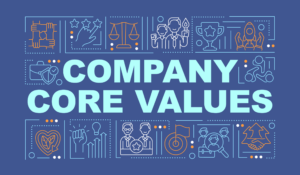For years, personnel management and talent acquisition professionals have warned businesses of the toll employee turnover takes on organizations. With every vacancy, your organization suffers lost productivity, and it must commit time and resources to find, screening, hiring, and onboard a replacement. There are also intangible factors to consider, such as the impact on workforce morale of the loss of superstar employees or even just the presence of a steady churn.
The actual numbers involved can be slippery. Employee Benefit News (EBN) reports that it costs employers 33% of a worker’s annual salary to hire a replacement if that worker leaves. Josh Bersin of Deloitte believes the cost of losing an employee can range from tens of thousands of dollars to twice the employee’s annual salary.
What is employee turnover costing your organization? You can work out an estimate with this spreadsheet put together by Lattice, the performance management service. Whatever the details of your specific situation, there’s one common point that all businesses can agree on: The less turnover, the better.
But just how do you reduce the churn in your workforce? A strong employee engagement program is the best place to start. Let’s take a look at 5 keys to reducing turnover by improving employee engagement:
- Recognize why employees leave
- Hire well and compensate competitively
- Help new hires envision their future
- Choose managers carefully and train them properly
- Maximize engagement at every level
Recognize Why Employees Leave
Conventional wisdom tells us employees leave only because someone else makes them a better offer. But sometimes the “better” offer has more to do with a dynamic, supportive work environment than it does salary and vacation time.
In fact, The Work Institute’s 2017 Retention Report concluded that 75% of the causes of employee turnover are preventable. Some of the main reasons employees change jobs include:
- Bureaucracy and rules from bygone eras that make no sense
- Little discussion of career development
- Incompetent management
- Lack of engagement and passion for what they do every day
What do all these things have in common? They are all symptoms of a lack of employee engagement.
Hire Well and Compensate Competitively
As a basis for great employee engagement, you have to start with the fundamentals. Hiring well in the first place is absolutely essential.
Naturally, you want to fill open positions quickly. But hiring just anyone can easily end up being an expensive and disruptive move. It’s better to take the time to find someone with the right skills and the right attitude to make a positive contribution to your corporate culture. Behavioral interview questions help you discover how candidates respond to different situations.
At the very least, be prepared to offer top talent compensation in line with industry norms. It’s not difficult to research a competitive salary range and common employee benefits based on similar jobs in your area.
When you bring on new talent, have a new employee onboarding process that makes sense, is efficient, and lets the new person know he or she is valued and welcome. You can make an excellent first impression by using technology like employee apps to streamline and smooth the onboarding process.
Help New Hires See their Future
Regardless of industry, top talent can afford to be picky. You need to talk specifically about their future with the company. For example, don’t leave them wondering how they can advance. You can bet that other companies are trying to entice them with their own great opportunities.
Discussing each and every new hire’s career path and goals is one of your most important employee engagement strategies. The next step is to provide them the mentoring and learning opportunities they need to advance toward those goals.
Choose Managers Carefully and Train Them Properly
Talk to ten people who recently quit their jobs, and you will find that a startling number of them quit because they could not stand their direct manager.
This is true whether a person is a line cook, a teacher, or a mortgage broker. There will be a rare instance when neither employee nor manager is at fault. Their personalities may simply clash. But most of the time, poor management and poor management training are major factors.
Invest in your managers. Choose the right people for the job and train, mentor, and coach them. These steps not only keep them engaged in their work. They also increase the likelihood that their direct reports will be more engaged as well.
Maximize Engagement at Every Level
Don’t limit your employee engagement strategies to making sure your top talent sticks around. These strategies should include everyone in the organization. Disengagement at one level or in one department has a way of rippling outward and affecting everyone.
After all, your top talent probably spends time interacting with a variety of colleagues in a variety of other roles. When these colleagues are disengaged, they make it harder for your top talent to remain engaged in their own work. Therefore, when considering employee engagement strategies, commit to learning about employee engagement at every point on the organizational chart.
Make High Turnover a Thing of the Past
Turnover is a cost of doing business, but it’s one you can keep to a minimum. Review your current employee engagement strategy and determine what you may be missing. If your program lacks a robust custom employee engagement app, it’s time to consider a tool like the HubEngage.
When considering a position, top talent is looking for evidence of strong communication, great opportunities, and effective management. And if they don’t see proof of all three? They’ll walk. You can demonstrate those attributes right away to new hires. Make one of their very first moves the download of your custom employee engagement app. They can even use the tool to walk through the onboarding process itself.














